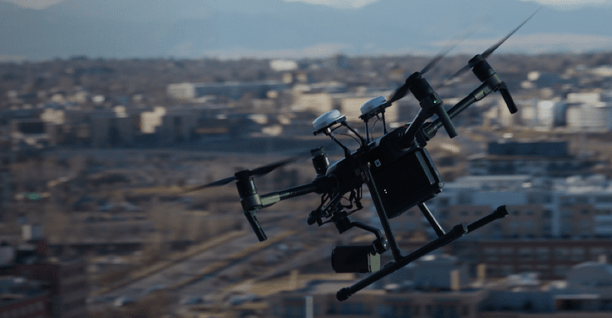 The Drone Manufacturers Alliance Europe (DMAE) accounts for almost 80% of the civil drones operated in the world today, including DJI, GoPro, Parrot and senseFly (Parrot Group). And they’re worried about the first EU drone rulebook.
The Drone Manufacturers Alliance Europe (DMAE) accounts for almost 80% of the civil drones operated in the world today, including DJI, GoPro, Parrot and senseFly (Parrot Group). And they’re worried about the first EU drone rulebook.
“DMAE applauds the effort put forward by EASA to finalise Europe’s first common rulebook for drones. This is an important step so the European drone market can operate with a common regulatory framework for the businesses, governments, researchers and other organisations eager to realise the benefits of safe drone use,” said Paula Iwaniuk of DMAE.
“The EASA Opinion contains useful concepts and requirements. But many of these remain vague or have been added in the last minute without much discussion or direction, such as drone lights. There is a risk that this lack of clarity could block our product development process,” explained Iwaniuk.
“The EASA Opinion follows the political agreement reached on the EASA Basic Regulation in December 2017. The Opinion is divided into two sections to covering the product and technical requirements as well as operations and registration, respectively,” says the DMAE.
The Opinion, like many drone regulations, doesn’t take into consideration the process to develop a consumer drone, or how often drone operators tend to buy new equipment. “The development of a consumer drone can take up to three years,” explains DMAE. “On average, drones are used for approximately 10 years. The draft rules, which are expected to enter into force in less than one year, currently only foresee a transition period of two years. The near-final rules currently do not include a grandfathering regime for older drones, which will represent a significant portion of the market. Similarly, a potential retrofit is economically unsustainable for operators.”
Iwaniuk noted: “Already today, drone manufacturers offer many features which will now become a legal requirement. Manufacturers need reassurances that our solutions meet expectations, and our operators need clarity that they can continue to fly their drones. This needs to be managed.”
The Need for Simplicity
While DMAE – and the rest of the industry – hoped that EASA Basic Regulation “would include simple, risk- and evidence-based rules in line with international standards,” it doesn’t.
A “micro drone” class has been repeated requested by stakeholders in the US and denied by authorities. It’s a concept that makes sense: it is simple to understand and measure, and some evidence indicates that light weight drones simply don’t have the potential for harm that other machines might. But EASA, like the FAA, decided against a weight-based classification. Instead of a simple weight threshold, it recommends a “kinetic energy threshold:” a concept which is both confusing and difficult to measure.
“Overall, there is a high degree of uncertainty when it comes to the outlined technical requirements. Without more precision and clarity, they will be interpreted differently by each stakeholder. We are missing key pieces to the puzzle: standards and methods of compliance” emphasised Iwaniuk. “EASA has done its best to provide some clarity by correlating it to an 900g weight threshold, but the testing to determine the transfer of 80 Joules of terminal kinetic energy on impact with a person is extremely challenging. We hope to learn more in the coming months,” said Iwaniuk.
The Problem of Regional Regulation
Just as the US industry struggles with state and local drone regulation and the rapid development of what former FAA Administrator Michael Huerta referred to as a “Patchwork Quilt” of drone regulations, allowing variations within European member states causes a big problem for European operators.
“There are several important pieces to the EU drone rulebook that will be in the hands of the 28 Member States – registration platforms, determining no fly zones, providing manufacturers with data for maps and designating competent authorities. It makes us nervous because we don’t want to have 28 different approaches or interpretations,” said Iwaniuk. While the Basic Regulation did not achieve an EU-wide drone registration system, Member States need to create digital, user-friendly, interoperable and cost-efficient platforms. “An operator in Belgium should be able to take their drone and easily use it in Slovakia.”
The DMAE asks Member States to “hold off with individual temporary solutions until the EU drone rules process ends. Not only will this increase confusion and non-conformity, it’s a burden for both industry and operators.”
“Harmonisation is crucial to create and maintain an EU market for drones,” says the DMAE.

Miriam McNabb is the Editor-in-Chief of DRONELIFE and CEO of JobForDrones, a professional drone services marketplace, and a fascinated observer of the emerging drone industry and the regulatory environment for drones. Miriam has penned over 3,000 articles focused on the commercial drone space and is an international speaker and recognized figure in the industry. Miriam has a degree from the University of Chicago and over 20 years of experience in high tech sales and marketing for new technologies.
For drone industry consulting or writing, Email Miriam.
TWITTER:@spaldingbarker
Subscribe to DroneLife here.







[…] post This Group Accounts for Almost 80% of the Civil Drones Operated in the World. Here’s Why They&… appeared first on […]